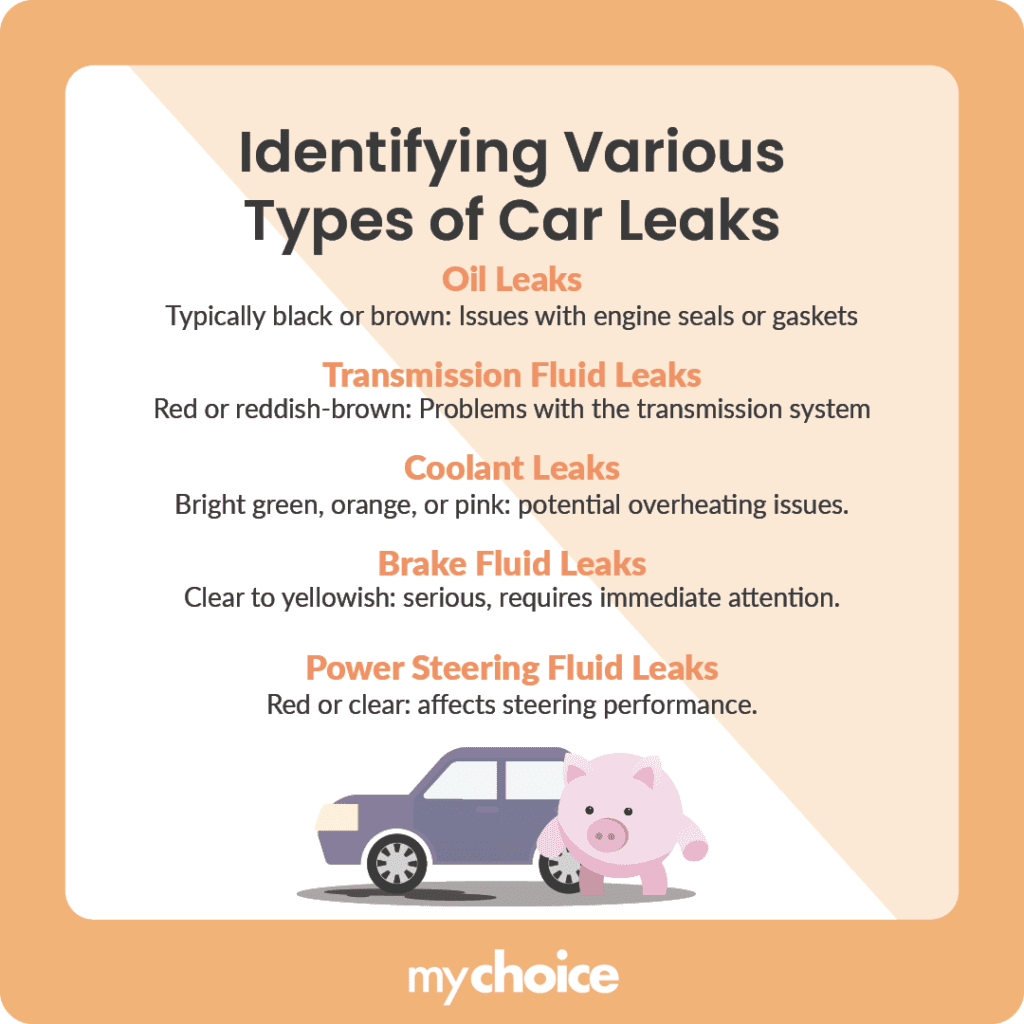Experiencing a leak in your car can be alarming and stressful, but understanding the situation can help you respond appropriately. Some car leaks are less serious than others, and not all of them need the services of a mechanic to fix.
How do you identify what’s leaking out of your car? Can you fix a car leak by yourself? Does your auto insurance cover car leaks? Read on to learn more about car leaks and what to do when they happen.
How to Identify if My Car is Leaking and If it’s Serious
To identify if your car is leaking and assess the seriousness of the situation, start by inspecting the puddle or stain left on the ground beneath your vehicle. Placing a clean piece of cardboard under your car overnight can help you identify the fluid more easily. In the morning, check for stains and note their colour and consistency. Here’s how to identify the various types of leaks:

Smelling the fluid can also provide clues—different fluids have distinct odours. For instance, gasoline has a strong fuel smell, while coolant often has a sweet scent. Monitoring your vehicle’s performance is equally important; if you notice changes such as difficulty steering or unusual noises, it could indicate a more serious issue that requires immediate attention.
If you suspect a serious leak – especially with brake fluid – it’s advisable to refrain from driving your car until it has been inspected by a professional.
Does My Car Insurance Cover Fluid Leaks?
To know whether your insurance covers fluid leaks, you need to familiarize yourself with the basics of auto insurance in Canada.
Before you can legally drive in Canada, you must have an auto insurance policy. The coverage you choose determines what types of damage your insurance will cover.
| Fluid leak source | Collision coverage | Comprehensive coverage | All perils coverage |
|---|---|---|---|
| Collisions | Covered | Not covered | Covered |
| Natural disasters | Not covered | Covered | Covered |
| Vandalism | Not covered | Covered | Covered |
| Theft | Not covered | Covered | Covered |
Generally, standard auto insurance policies do not cover fluid leak repairs unless they result from a specific incident mentioned in your policy. If your car starts to leak due to wear and tear, lack of maintenance, or other preventable issues, your insurance will likely not cover the repair costs. Insurers typically see vehicle maintenance as the owner’s responsibility, so they do not cover fluid leaks caused by neglect.
Fixing an Oil Leak Without Going to a Mechanic
If you discover an oil leak and want to address it without visiting a mechanic, consider following these steps to effectively manage the situation and potentially resolve the issue on your own:
While these methods can help manage minor issues, persistent leaks should be addressed by a professional to avoid further damage to your engine.
How Can I Prevent Car Leaks From Happening in the Future?
Preventing car leaks is essential for maintaining your vehicle’s performance and longevity. By taking proactive measures and staying vigilant, you can address potential issues before they escalate into costly repairs.
One of the most effective ways to prevent leaks is through routine inspections. Make it a habit to check under your car regularly for any signs of fluid leaks. Schedule oil changes every 4000 to 6000 miles, transmission fluid checks, and coolant replacements according to the manufacturer’s recommendations. Keeping fluids at proper levels ensures that all systems function optimally and reduces the risk of leaks caused by low fluid levels. Always use the recommended fluids for your vehicle to maintain compatibility and performance.
It’s equally important to maintain proper fluid levels across all systems in your vehicle – regularly checking levels ensures everything operates smoothly. Another preventive measure you can take is to store your vehicle properly by avoiding parking on uneven surfaces that could worsen existing issues.
Key Advice From MyChoice
- Performing regular checks and maintenance on your vehicle is the easiest way to minimize the risk of a fluid leak.
- Purchasing separate mechanical breakdown insurance or an extended warranty can ensure that fluid leak repairs are covered even if your regular auto insurance doesn’t cover it.
- Your auto insurance policy will only cover fluid leak repairs if they are a result of a specific peril that you’re covered against.








